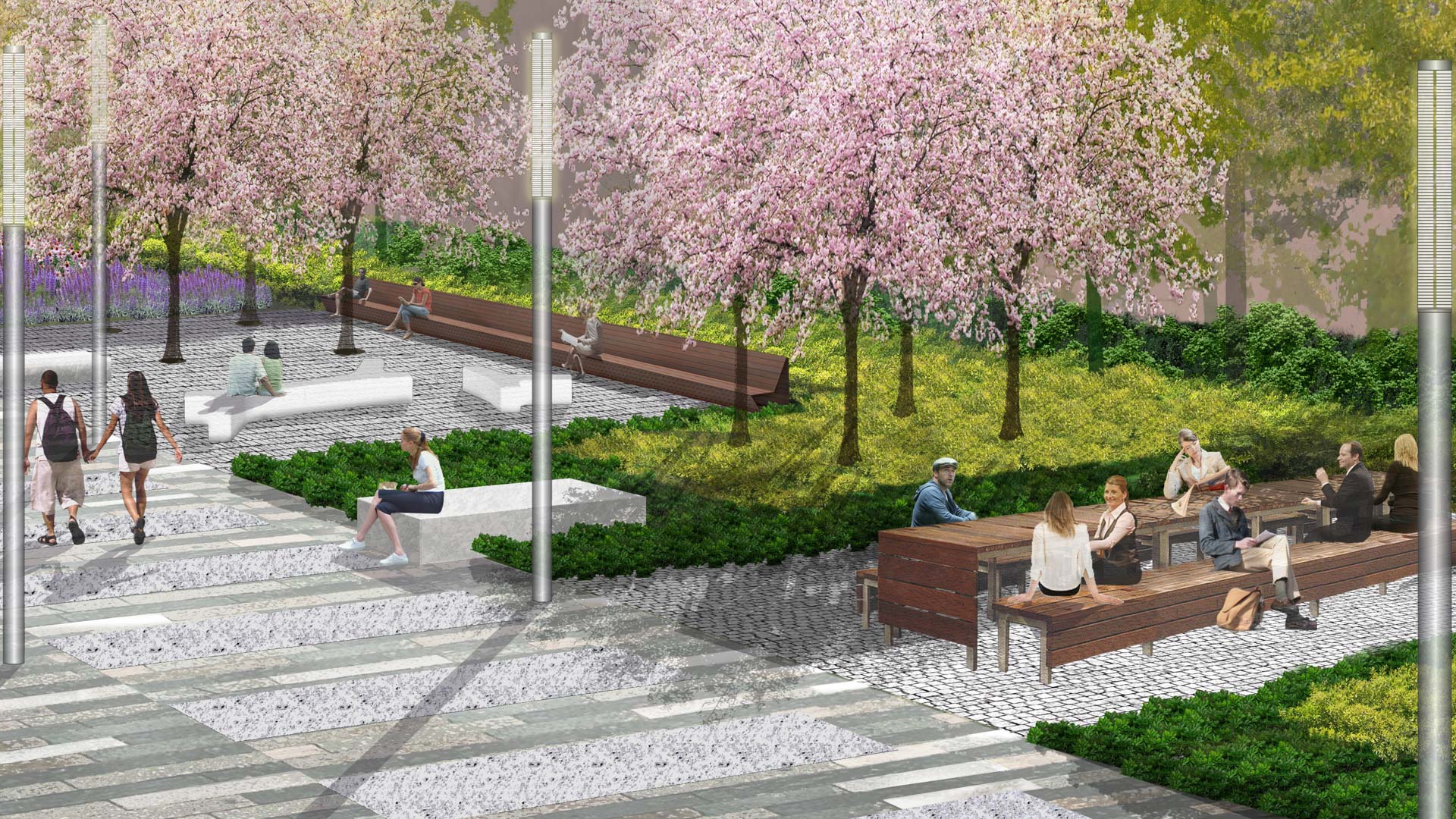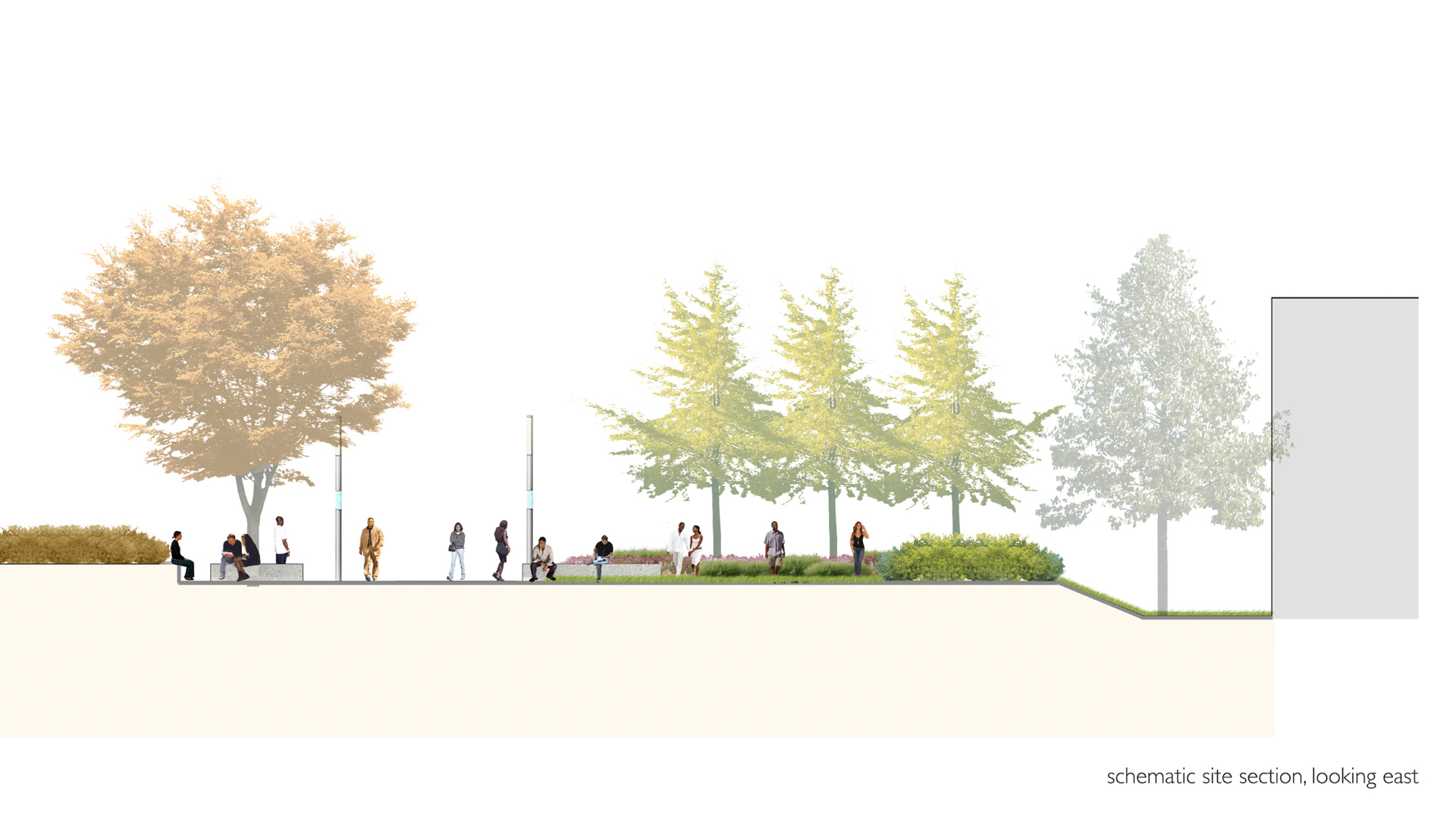Since its founding in the 1960s, Medgar Evers College has been a central figure and source of pride for Brooklyn’s Bedford Stuyvesant community. Its reinvigoration, spurred by a rapidly expanding student body, began ten years ago with a campus master plan, prepared by Ennead Architects and Thomas Balsley Associates. In addition to new facilities, the plan foresaw a shortage of outdoor public spaces normally associated with a robust academic setting and proposed closing the street that had divided the campus. Ten years later, a capitol program provided the means by which a new central quad and promenade would replace the street and parking. With this bold urban intervention and an intense greening program, this new vision for the school’s outdoor public spaces will enhance campus life for students, faculty, and visitors.
Together with its promenade, this new quad provides a unifying pedestrian connection between Bedford and Franklin Avenues and between existing and new campus buildings, finally providing the campus with a cohesive identity and sense of place. With the dramatic transformation of a street to more campus green space comes the opportunity to integrate a series of sustainability strategies into the campus environment. The carbon footprint of the campus is reduced through the implementation of porous paving, native plantings and gabion walls in bioswales, and low voltage LED lighting.
The promenade serves as an academic “hallway” and is bordered with a diverse array of seating opportunities and a series of “garden rooms” which serve as outdoor classrooms, living rooms, study spaces, and planted gardens. At mid-point, the promenade swells into a large lawn area, a much needed center to the campus for informal academic lounging and large gatherings such as performances, festivals, and the annual graduation ceremony. To unify the hallway’s variety of spaces, a series of landscape and architectural elements is deployed, including a distinct and modulated paving pattern, plinths for seating, and light pylons with interpretive graphics that form the school’s “walk of fame.”
awards:
SUNY Albany Uptown Campus
With great respect for Edward Durrell Stone’s 1960s modernist campus, this new master plan redefines the campus’ first impression image and reclaims quads as new venues for an enhanced campus lifestyle. The entry drive encounters a new Collin’s Circle, now raised to the level of the entrance plaza. The earthen plinth engages the plaza entry at the new Ad...
Montclair State University Student Center and Quad
SWA/Balsley collaborated with DIG Architects and Montclair State University to reimagine the campus student center, adjacent quad, and connections to the surrounding campus. Through site analysis and project stakeholder meetings, key pedestrian and vehicular circulation routes were identified for resident students, daily commuters, and University staff. The st...
New Jersey Institute of Technology Green
This campus, like many others, has suffered from the lack of a coherent plan, rendering its campus experience to a series of passages through disconnected interstitial spaces. A key component of the landscape master plan was the identification of new building sites on campus that would shed light on a comprehensive assessment of open spaces and movement system...
Samsung Electronics Training Center
Evolving trends in technology and the need to build a new, state-of-the-art Electronics Training Center allowed Samsung to commission the collaborative team of Samoo Architects and Thomas Balsley Associates for the design of their new facility in Keyonggi-Do Province in Korea. Essential to both Samsung and the design team was a site design solution that would ...







